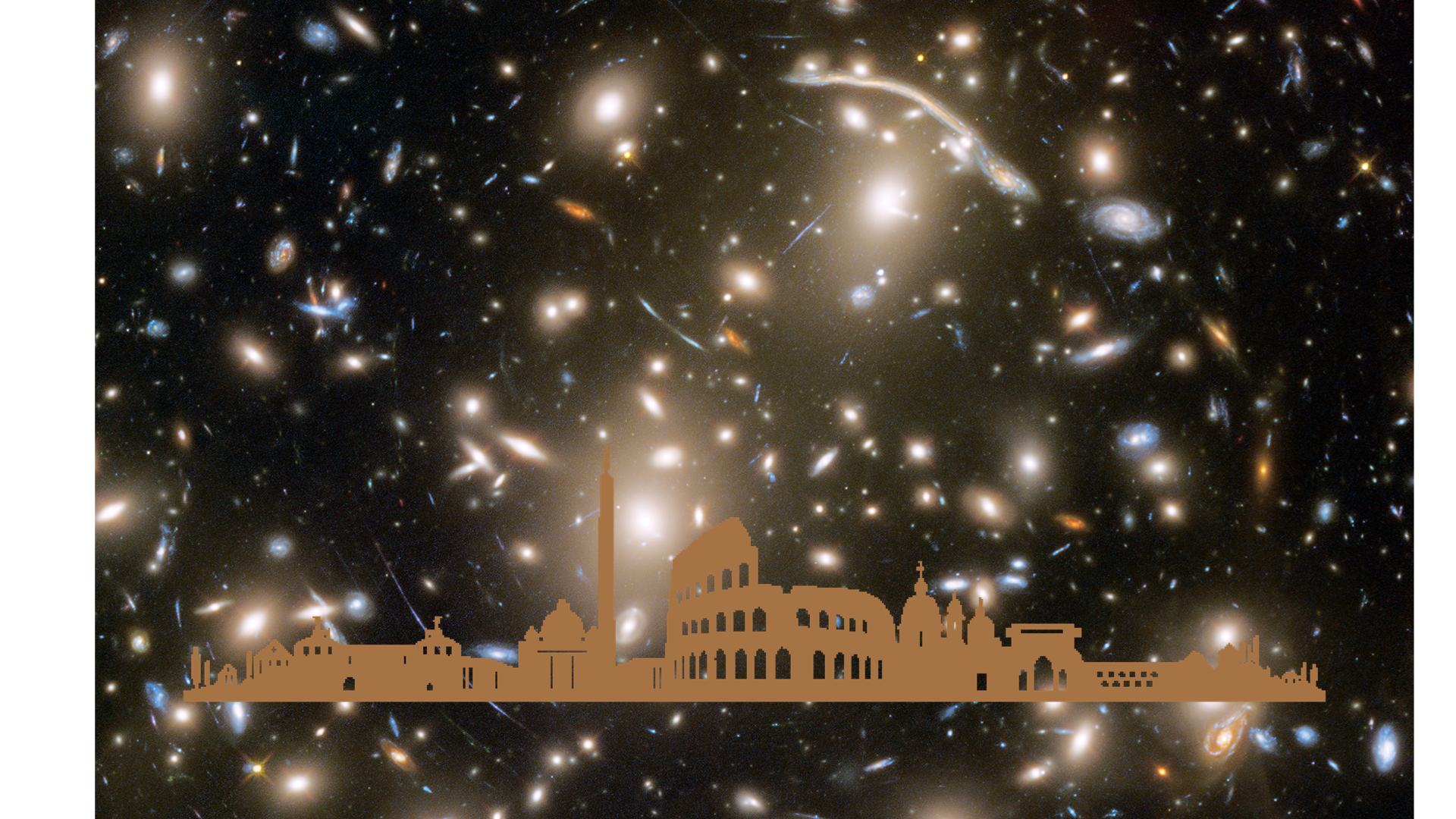Supervisor: Luca Graziani
co-supervisor: Raffaella Schneider

Fig: Cosmological simulations with our code dustyGadget (Graziani+2020) can be run on large cosmological volumes with comoving size of 40 – 50 h-1 cMpc (Di Cesare+23), but also on zoom-in simulations centered on selected regions. The simulated galaxies are then post-processed with the photoionization code Cloudy to compute nebular emission lines, and with the radiative transfer code SKIRT to compute dust extinction and continuum emission. An example of a synthetic spectrum of a simulated galaxy at z ≈ 12 obtained assuming a mixture of Pop II stellar binaries and Pop III stars is shown in the rightmost panel, with observed JWST photometric data (pink) and ALMA upper limit (orange). Through this procedure, we will be able to produce synthetic observables for the simulated galaxies at z ≥ 6 – 10 to be compared with the large wealth of JWST data that is being assembled.
The launch of the JWST in December 2021 has enabled an unprecedented epochal leap forward in our understanding of cosmic dawn. As of today – more than 10 galaxies with spectroscopic redshifts z > 10 have been detected, the most distant of which at z ≈ 13.2 (Curtis-Lake+23). This corresponds to a Hubble time of only 320 Myr, less than 3% of the current age of the Universe, and it is expected that the redshift frontier will be pushed to even earlier epochs in the coming months. A swarm of z > 10 – 20 candidates has been photometrically identified, providing the first constraints on the cosmic star formation rate out to z ≈ 16.5 (Harikane+23). The physical properties of these early galaxies in terms of stellar mass, star formation history, chemical enrichment, stellar populations, have revealed unexpected findings, even sparking speculations that these observations might be in tension with the LCDM model. JWST observations provide a new and unique “stress test” for the current generation of models. The conditions in these early galaxies are expected to be much different from those prevailing in the nearby Universe or at intermediate redshifts, that most galaxy formation models have used for calibration and validation up until now. The interstellar gas is likely to have been much denser, at lower metallicity, and more turbulent. The main aim of this thesis project is to investigate the physical processes in the first galaxies, specifically those formed at z > 10 using hydrodynamical simulations run with our dustyGadget code (Graziani+20). These simulations predict star formation, chemical evolution histories, stellar population properties (including Pop III stars, Venditti+23) for a significant sample of galaxies at z > 6 – 10 (Di Cesare+23). Post-processing the simulation outputs with public radiative transfer models (CLOUDY, SKIRT) allows us to generate synthetic galaxy spectra that will be compared to JWST and ALMA observations, in collaboration with the group at INAF/OAR.
References
Curtis-Lake+23, Nat. Ast. 7, 622
Di Cesare+23, MNRAS, 519, 4632
Graziani+20, MNRAS, 494, 1071
Harikane+23, arXiv:2303.11946
Venditti+23, MNRAS, 522, 3809
